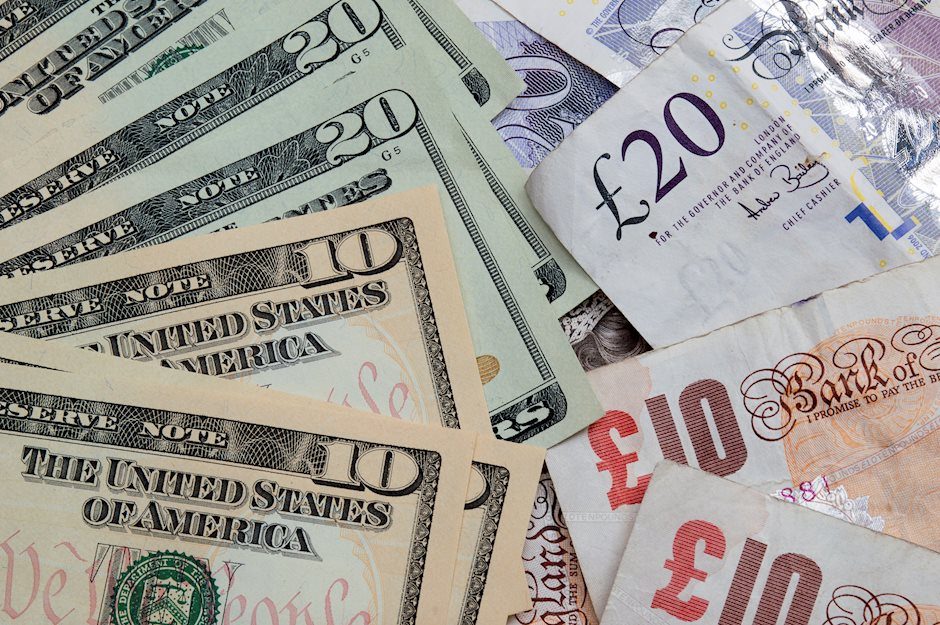GBP/USD weakens to near 1.2500 on BoE dovish bets for 2025
- GBP/USD remains weak near 1.2510 in Thursday’s Asian session.
- Fed officials projected they will make just two quarter-percentage-point rate reductions by the end of 2025.
- Dovish BoE bets and Trump’s tariff threats could undermine the GBP.

The GBP/USD pair remains on the defensive around 1.2510 on Thursday during the Asian session, pressured by the stronger US Dollar (USD) broadly. The prospect that the Federal Reserve will slow the easing cycle this year supports the Greenback against the Pound Sterling (GBP).
The Fed lowered the Federal Funds Rate to a range of 4.25% to 4.5% in its December meeting, down from its target range of 4.5% to 4.75%. Fed Chair Jerome Powell emphasised the need for caution on further rate reductions amid stubbornly high inflation. Powell said that the US central bankers anticipated a higher inflation outlook and fewer rate cuts next year. Fed officials pencilled in only two rate cuts in 2025, down from the four it had forecast in September.
On the other hand, a mild increase in the Bank of England's (BoE) dovish bets this year drags the Cable lower. The BoE Governor Andrew Bailey signalled a “gradual” approach to interest rate cuts “remains right,” pushing back against market bets on fewer rate cuts in the coming year. Additionally, Bailey added that the uncertainty surrounding the geopolitical risks and trade policies ahead of Donald Trump’s return to the White House could weigh on the already-slowing UK economy, creating a headwind for the GBP.
Pound Sterling FAQs
The Pound Sterling (GBP) is the oldest currency in the world (886 AD) and the official currency of the United Kingdom. It is the fourth most traded unit for foreign exchange (FX) in the world, accounting for 12% of all transactions, averaging $630 billion a day, according to 2022 data. Its key trading pairs are GBP/USD, also known as ‘Cable’, which accounts for 11% of FX, GBP/JPY, or the ‘Dragon’ as it is known by traders (3%), and EUR/GBP (2%). The Pound Sterling is issued by the Bank of England (BoE).
The single most important factor influencing the value of the Pound Sterling is monetary policy decided by the Bank of England. The BoE bases its decisions on whether it has achieved its primary goal of “price stability” – a steady inflation rate of around 2%. Its primary tool for achieving this is the adjustment of interest rates. When inflation is too high, the BoE will try to rein it in by raising interest rates, making it more expensive for people and businesses to access credit. This is generally positive for GBP, as higher interest rates make the UK a more attractive place for global investors to park their money. When inflation falls too low it is a sign economic growth is slowing. In this scenario, the BoE will consider lowering interest rates to cheapen credit so businesses will borrow more to invest in growth-generating projects.
Data releases gauge the health of the economy and can impact the value of the Pound Sterling. Indicators such as GDP, Manufacturing and Services PMIs, and employment can all influence the direction of the GBP. A strong economy is good for Sterling. Not only does it attract more foreign investment but it may encourage the BoE to put up interest rates, which will directly strengthen GBP. Otherwise, if economic data is weak, the Pound Sterling is likely to fall.
Another significant data release for the Pound Sterling is the Trade Balance. This indicator measures the difference between what a country earns from its exports and what it spends on imports over a given period. If a country produces highly sought-after exports, its currency will benefit purely from the extra demand created from foreign buyers seeking to purchase these goods. Therefore, a positive net Trade Balance strengthens a currency and vice versa for a negative balance.
Author

Lallalit Srijandorn
FXStreet
Lallalit Srijandorn is a Parisian at heart. She has lived in France since 2019 and now becomes a digital entrepreneur based in Paris and Bangkok.
















